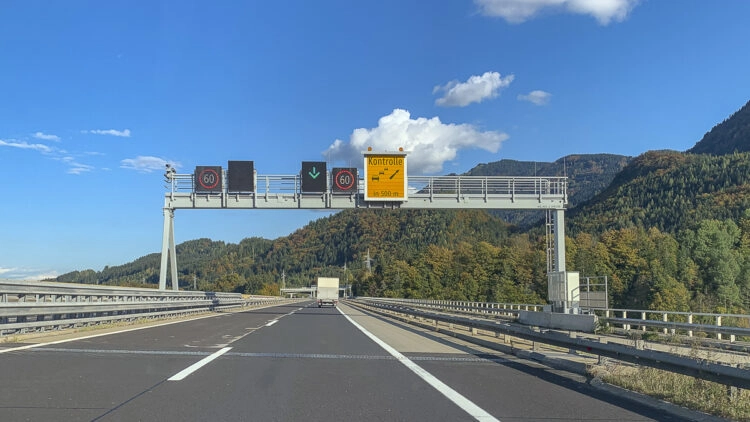Austria is once again stirring up trouble for travelers to the Adriatic, as the Austrian Ministry of Health is publicly and effectively considering tightening entry regulations in the form of a mandatory PCR test. This should then also apply to vaccinated and recovered travelers returning from Croatia. The reason: 322 Corona infections were detected within one week in Spain-returners, 186 in Croatia-returners.
But as Winston Churchill said, “Don’t trust statistics you haven’t falsified yourself!” And that’s probably how it is here, too. The resilience of the mentioned numbers remained owed the policy to the media, a closer delimitation on certain groups of persons did not take place likewise, thus again a blanket suspicion against Croatia vacationers – the usual suspects in things Corona infection. Although it is also said that where there is smoke, there is also fire, but here it is probably more about political calculation than fact-based statements.
Now already PCR test when returning from the Netherlands, Spain, Cyprus
Incidentally, anyone who enters Austria by plane from the Netherlands, Spain or Cyprus in the future as a travel returnee must already take a PCR test in the form of a gargle test at the airport. Immunized or recovered persons are excluded from this. The only question is: Who wants to check this at the border crossings to Slovenia, for example? Considering the traffic jams this weekend, no one has an answer to that yet.
Party vacations as pandemic drivers?
One should seriously ask oneself whether images such as those currently seen at the festival “Austria goes Zrce” ( www.austriagoeszrce.at ) on the island of Pag are really timely in times of the Corona pandemic. And, whether the time is not ripe to differentiate between certain vacation forms, before once again a whole country like Croatia under general suspicion is placed. Boat and yacht owners, but also responsible vacationers in hotels, apartments and campsites certainly display a different behavior and should not be blanketly classified as pandemic drivers.
No changes so far on return trips to Germany and Austria
Therefore, at present, but still applies: who plans a stay in Croatia, Slovenia or Italy, can currently still breathe easy: the assessment of the Corona situation of the especially for Germans and Austrians interesting Robert Koch Institute of Friday, July 24, 2021 has not resulted in any changes regarding the rules for returning to Germany or Austria.
This means for the vacation countries Croatia, Slovenia and Italy: when Austrians return to Austria, the 3-G rule still applies; when Germans return to Germany: only those who come from the Zadar region, which has been considered a Corona risk area since June 27, 2021, must prove that they have not contracted Corona when entering or immediately after entering Germany. In addition, returnees from Zadar County/Croatia must also complete the digital entry application. Returning travelers from Italy and Slovenia are completely exempt from this requirement.
Only Zadar risk area for Germans
On the homepage of the RKI, it is explicitly stated: When entering after a previous stay in a simple risk area, travelers must have a negative test result, a vaccine or recovered proof no later than 48 hours after entry (to Germany, editor’s note). The proof must be uploaded via the entry portal at www.einreiseanmeldung.de.
Croatia: “State with low epidemiological risk”
Austria classifies Germany, Italy, Slovenia, and Croatia as “low epidemiological risk states” according to Annex 1 of the currently valid Entry Regulation. Therefore, according to Section 5 of the Austrian Entry Ordinance, “Persons entering from a state or territory listed in Annex 1 and credibly demonstrating that they have resided exclusively in such a state or territory or in Austria within the past ten days shall carry with them proof of a low epidemiological risk. If no proof is available, registration shall be carried out and a test shall be carried out immediately, but in any case within 24 hours of entry.”
Slovenia transit regulations suspended
So, generally speaking, there’s nothing to stop vacationers from visiting an Adriatic littoral state at the moment, especially since Slovenia has also suspended initially adopted transit regulations.
High incidence levels in Spain and the Netherlands
With Spain currently considered a high-incidence area, with a 7-day incidence of approximately 330, and the Netherlands with a similar incidence value of 361, effective 00:00 on July 27, 2021, travelers returning to Germany must be quarantined for at least five days if they have not been vaccinated or recovered from COVID-19.
Istria one of Europe’s safest regions
At present, Croatia is still far from such values. Overall, the popular vacation destination has a 7-day incidence of 20. However, with strong regional differences: Istria in the north shines with an incidence value of 1.4 and is thus probably one of the safest vacation regions in Europe, especially since Istria’s vaccination rate can be classified as the highest in all of Croatia. Dalmatia, with its incidence value of 105.8 (both dates as of July 23, 2021), represents the sad tail end. By the way, the vaccination rate in Dalmatia is also significantly lower than the average Istria. Therefore, there are currently efforts to consider Istria detached from the Croatian Adriatic coast.
Croatia on the ECDC map orange
On the ECDC map Croatia is already listed in orange. However, this circumstance currently has no effect on the ratings of Germany and Austria. Nevertheless, when viewed in an undifferentiated manner, the relatively high incidence values of the southern regions also cast a poor light on Istria and the more northern regions in general.
Italy and Slovenia with low incidence values
Italy, with a 7-day incidence of 43.5, and Slovenia, with 19.8, are not currently at risk of a change in classification. However, even here it is advisable to look at the SeaHelp-Corona figures, because in Italy in particular the figures are rising sharply.
Despite all this, the current incidence values and reactions from politics, especially Germany and Austria, point to a reasonably calm further course of the season, if the numbers of the Adriatic states remain at this level and both tourists and locals show reason.













